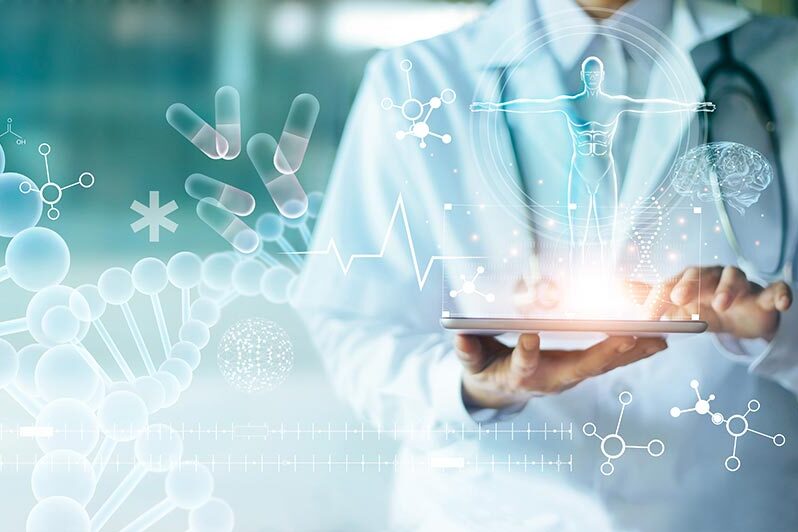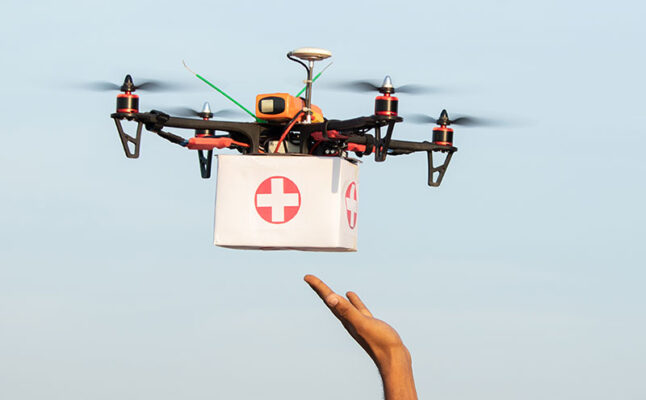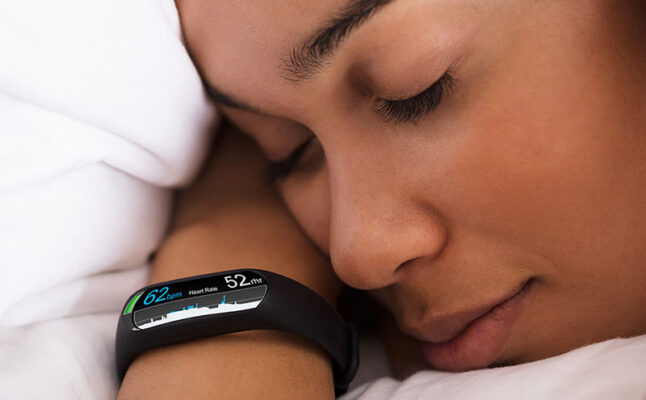5G in Health Care: 4 Revolutionary Use Cases
By Carsten Brockmann
February 29, 2024

Since COVID-19, 5G technology has continued to transform health care. Connected medical devices have been accepted among all ecosystem players, from patients and doctors to policymakers and insurers.
However, it isn’t just the speed of 5G driving new use cases across the connected health care continuum. Today, 5G ultrareliable low-latency communication (URLLC) allows for the highest data throughput and millisecond latency. Advanced 5G features, like network slicing and mobile broadband, contribute to these innovative use cases in the medical market.
Here are four existing use cases in connected health care made possible by 5G technologies and mobile broadband.

In emergencies, timeliness and speed are everything for first responders. Of course, an ambulance can only travel so fast on roads.
What if there was a way to streamline various processes — namely, medical file transfer — while the vehicle was en route? First responders with tablets and other mobile devices need ad hoc, mobile and remote access to data. This is necessary for them to transfer and receive medical files while in transit to and from emergency sites. With mobile broadband and 5G URLLC, ambulances can send vital patient health data to the hospital before arrival.
5G network slicing also supports connected ambulances. This concept allows operators to create multiple virtual networks on top of a shared physical infrastructure.
Each slice stems from a single 5G network. However, they can be customized and grouped into dedicated channels and frequencies, saving money and time for network architects.
5G network slicing lets operators connect devices and endpoints for better service quality. It provides low latency and guaranteed data throughput for first responders.
6G Health Institute is a German health research institute that explores how to enhance medicine with innovative network technologies. It has built a mobile 5G hospital network on its campus that uses 5G slicing, the first such network in Germany.
“This technology lets us access our health slice from the 5G mobile network of Telefonica even outside the campus. This enables secure roaming of patients from the ambulance to the emergency room, within the clinic campus, and to the hospital and home. This way, we can provide intense care anywhere while protecting data privacy across the patient journey.”
Prof. Dr. Med. Christoph Thuemmler, Chief Medical Officer, 6G Health Institute

Thanks to 5G and mobile broadband, the operating room doesn’t have to be isolated. Now, by connecting the operating room, hospitals can open it up for remote experts to provide emergency insights.
5G-enabled AR and VR headsets would allow specialists to guide remote procedures. Also, connected operating rooms will significantly enhance training for younger colleagues.
For example, there is an ongoing shortage of medical professionals in Chile, particularly in oncology. The Arturo Lopez Perez Foundation and NTT Group collaborated to enable doctors in Chile to broadcast the nation’s first live surgery using 5G technology. This broadcast helped accelerate training for a new generation of physicians.
Another benefit of connecting the operating room through 5G and mobile broadband is that it allows medical professionals to streamline medical file transfers. Typically, medical professionals use technologies like fiber to transfer, store or copy tomography files (e.g., X-rays and MRIs).
However, 5G and mobile broadband are more optimal for remote expert collaboration. 5G offers direct end-to-end connections that are not bouncing off hospital firewalls, maintaining the highest level of patient data privacy. In addition, 5G URLLC networks use antennas indoors for communication. This means hospitals can replace Wi-Fi and remove cumbersome cabling from operating room devices.

5G-connected drones are another use case driven by 5G URLLC communications and mobile broadband. Health care providers often struggle to deliver medical supplies to remote areas. Moreover, in the case of natural disasters like fires and flooding, roads can become an unreliable means of transportation. In such scenarios, 5G-connected drones can be steered by a remote pilot, offering a swift and safe alternative.
Wingcopter recognized that people in remote regions with chronic conditions like diabetes could be isolated for days during natural disasters. The company partnered with Vodafone, NUIG, Skytango, Survey Drones Ireland and Novo Nordisk to evaluate the first diabetes medication delivery via drone.
The autonomous drone flew 21 kilometers in 17 minutes through harsh wind conditions. It gently touched down on the Aran Islands and successfully returned with a blood sample to be tested on the Irish mainland.
These drones also provide deliveries to medical professionals at emergency sites as needed. The Red Cross in Austria used an automated drone to deliver a blood bag from its district office in Lilienfeld to the nearby state hospital in just a few minutes. Typically, if a hospital needed blood, a car would have to transport it. However, 5G-connected drones can reduce this journey time.

Since COVID-19, fitness and wellness tracking devices have seen increased adoption for monitoring vital sign information. Eventually, medical-grade usage of connected devices gave rise to regulations from the U.S. FDA and the European Medical Device Regulation.
These regulations require authentication and tighter security when communicating patient data. Put simply, these policies don’t allow someone to buy an Apple Watch and send data to their favorite doctor.
Private 5G and private networks provide new ways to secure endpoints and meet the requirements of these cybersecurity policies. At the same time, 5G network slicing also gives health care practices their own private, always-on networks.
As such, a hospital could use a 5G private network or slicing to send its patients home while maintaining tight surveillance, allowing medical professionals to react quickly to issues. Furthermore, private networks can assist emergency services. In California, for instance, the Defense Innovation Unit implemented a prototype private network that supports push-to-talk voice, geolocation and live maps.
5G features like private 5G networks help connected medtech actors meet tight cybersecurity policies. Still, choosing the right Internet of Things (IoT) health care solution provider can be challenging.
Telit Cinterion has over 23 years of knowledge and experience in the space. We have the most secure, reliable technology and connectivity to help you meet evolving regulations and deliver top-quality patient care.
Speak with our connected health care experts and discover how Telit Cinterion can enhance your next IoT deployment.
Editor’s Note: This blog was originally published on 24 July 2019 and has since been updated.